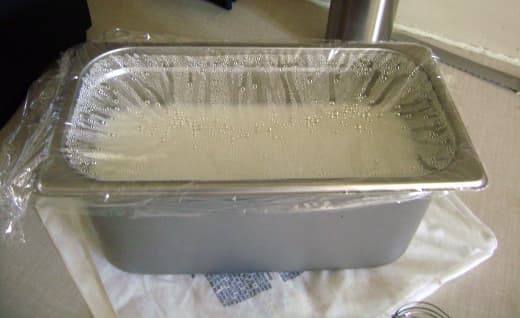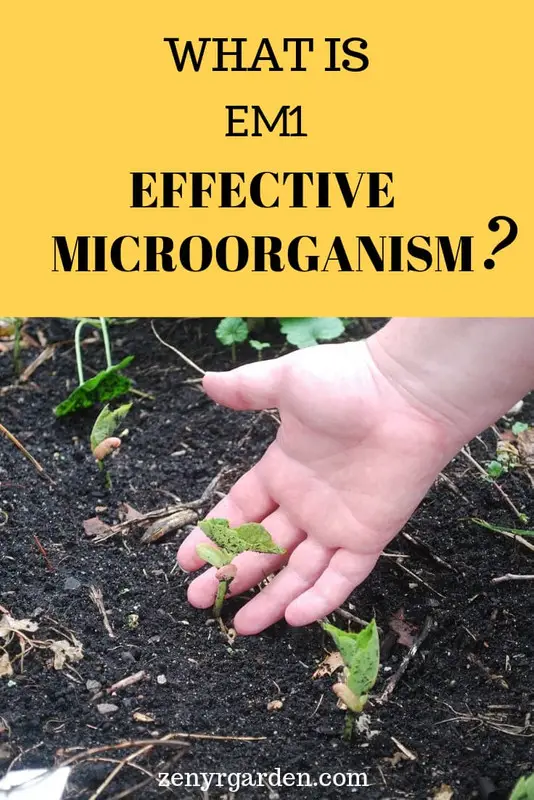EM, short for Effective Microorganism, are those good little microbes that are useful for composting, fertilizing, reducing odor & improving digestion. People usually use EM in bokashi compost, cleaning chicken coops & even purifying the water.
A Brief Background Of Effective Micro-organisms
EM was discovered by Dr. Teruo Higa in the 90s. At that time, farmers were struggling with crop yield and many turned to chemical pesticide solutions, which inevitably led to undesirable results for the soil, environment and human health. Motivated by this reality in farming, Dr. Higa started his search looking at more gentle solutions for the environment that could still bring about good results.
There has to be a better solution. And indeed he did stumble upon something interesting borrowed from nature. It was the bacteria.
What he found was that it was not only one type of good bacteria that could do the work to increase crop yield and soil fertility. But instead, it was the synergy of several different types of microorganisms that could bring about that effectiveness faster and easier, and also gentle on plants and humans. Hence he named these effective microorganism or EM for short.
As for good microbes, the types we usually refer to are:
- Bacteria
- Fungi
For EM to work well, we will often see these guys in the mix:
- Lactic acid bacteria: the bacteria that turn foods acidic like in yogurt
- Yeast: those found in bread yeast or beer yeast
- Photosynthetic bacteria
- And some other fungi
Let's see why & how EM can be useful in the home and garden:
The Benefits of Effective Microorganism
EM, first of all, can be very cheap to make. It exists all around us on the foods we eat. Indeed, the microbes in one local area may be different from another local area as each has been climatized to each specific environment. So it's recommended that we collect those native ones to best suit the local region.
Secondly, EM are renewable. Once we collect the first generation of EM, we can use part of it to start a new generation EM2, EM3. This mass expansion or multiplication gives us a crowded family for longer usage at lower cost.
Finally, EM is safe for us humans, the plants, the pets & the overall eco-system. The idea is basically to use life (biology) to encourage or discourage other life forms in the places that we want.
Using EM in the garden can help add vitality back to old worked-out soil, prevent plants from diseases & shoo away undesirable insects, flies or pests. There will be less excessive reliance on harmful chemical fertilizers. Growers will enjoy good, bountiful crops.
Here are some results:
The Amazing Results in the Garden
From all the benefits that we've read about earlier, here are nature's results right before our own eyes.
>> Link YouTube:
Effective Microorganisms ReviewFrom one grower's experience, sometimes the veggie or fruit yields or quality may not be as we desire because of some blockage of nutrients in the soil. The plants, therefore, cannot uptake or digest the good bits immediately or in the form the nutrients are in.
An example of this is calcium which may be blocked by an excess amount of nitrogen in the soil. Phosphorous is another hard-to-digest one for the plants.
With some good active microbes added in, they get the hard work done for the plants. They chew up all the hard bits making nutrients accessible and easier to uptake for plants. You can just tell that they are having enough good nutrients by the look of it.
As these solutions are organic based, we can't expect it to work overnight. You may not see anything significant the next day. But in a week or more, you'll start to see some results as the soil & all its biology starts re-activating or regenerating the life all around and inside it. It's a true blessing & some sort of miracle to have such a thing to revitalize a land of mostly clayey soil or dead humus.
>> Link YouTube:
EM Farming In Maryland 2012With that said, the microbes also work great for cut flower garden and fruits. Orchid growers have sprayed this stuff on their orchids about once or twice a week. From what they've seen, the plants produce more flowers & the flowers remain on the stems for much longer.
Regarding fruits, speaking of dragon fruits specifically, people have seen 4 fruit pushes a year with this simple solution mixed in–compared to 1 push a year with other fertilizers. Fruits grow bigger, often 2x or 3x the size of normal fruits, without any excessive amount of pesticide, fungicide or other undesirable chemical stuff. It's a true symphony of nature.
>> Link YouTube:
My Garden on EM-1Making EM At Home is Easy
Although EM may sound scientific, really anybody can make it cheaply right from the materials in their local area. The combination of lactic acid bacteria (LAB), yeast & some phototropic bacteria has proven to work well.
In this mix though, you'll find LAB the most dominant out of the other species. And the good news is LAB (the sour guy) exists everywhere. You can find it in milk, yogurt, drinking yogurt, on rice and grains, and in many more places. In some homemade EM, people mostly culture LAB and the results still turn out fine.
We show you how you can make your own EM right at home here:
>> Link Blog post:

Until then, have fun building your soil and garden. See you again next time.
Share or pin this post!



